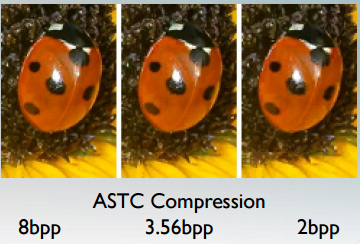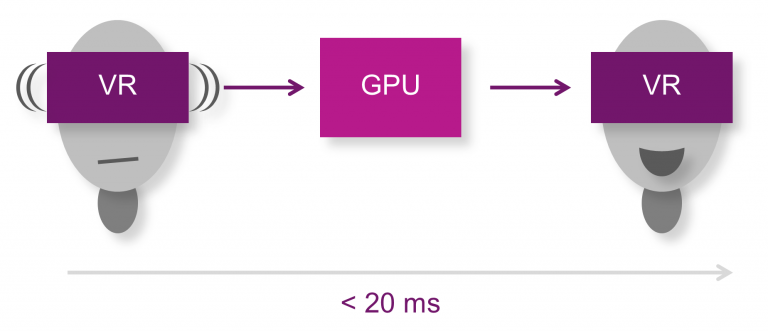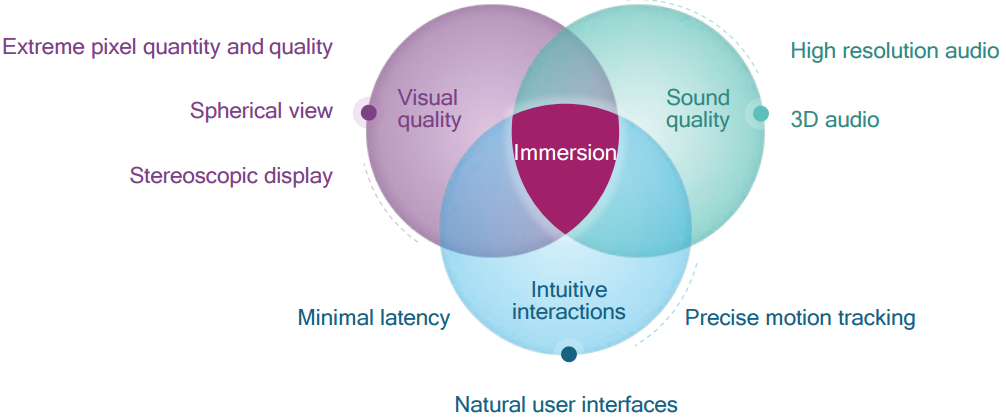Mobile GPUs Are Getting Ready For 'Daydream' VR
At Google I/O this week, Google announced the “Daydream” VR platform for Android, which will set some guidelines and specifications for what smartphone makers need to use as both hardware and software to enable decent VR experiences on mobile. Chip vendors have already started preparing for Daydream, with ARM, Imagination, and Qualcomm promising optimization for their own GPUs that promise to make VR work well on mobile devices.
VR Puts Focus Back On High-End Devices
Just as Moore’s Law is showing signs of slowing down, VR comes at the right time to push chips to their limits, as VR content (games, especially) will need all the performance they can get. This is more true on mobile, where the hardware is much more power-constrained than on PCs.
VR also comes at a time when people have started feeling that $600+ smartphones and $1,000+ notebooks aren’t as as appealing anymore, as you can get a quality device with high-enough specifications for half of those price points these days.
However, the VR excitement is good news for those who design CPUs, and it’s even better news for those that design GPUs. It’s also good news for the silicon partners that get to sell them, and for the smartphone OEMs that ultimately put the devices in consumers’ hands. What VR means for all of these players is that consumers will keep buying high-end devices for years to come.
ARM
As one of the main stakeholders in the Android mobile ecosystem, ARM is also one of the key players of the Daydream platform. ARM said it has been working with Google as well as its silicon partners to ship the first Daydream-ready products on the market later this year.
ARM’s Mali GPUs lead the mobile GPU market in number of units shipped right now, having surpassed Imagination a few years ago. That happened thanks in part to Samsung and its Exynos chips, as well as to cheaper smartphones in Asia, which usually come with ARM’s lower-cost Mali GPUs.
The company claimed that features such as the ARM Frame Buffer Compression (AFBC) can reduce memory bandwidth requirements by up to 50 percent. ARM said that this technology can enable smoother VR video playback, as VR would have a need for larger bandwidth, especially at high resolutions such as 1440p and 4k/UHD.
Get Tom's Hardware's best news and in-depth reviews, straight to your inbox.
The Adaptive Scalable Texture Compression (ASTC) technology supported by ARM’s latest Mali GPUs (and other recent GPUs on the market) can further reduce bandwidth requirements while still delivering decent graphics quality.
ARM’s GPUs also support 16x MSAA for “best quality anti-aliasing.” The anti-aliasing can reduce the artifacts that should be more pronounced in VR because you’re viewing the content in stereo.
On the software side, the company has been optimizing its drivers to reduce latency and ensure fast context switching that is necessary for VR. ARM also enabled a few more OpenGL ES extensions to support efficient rendering to multiple views for both stereo and foveated rendering.
Imagination
Imagination, like ARM, has also been working on optimizing its GPUs for VR and for Google’s Daydream platform. The company has taken a special interest in latency and resolution, two of the key factors that can be improved directly by GPUs.
The main reason why Imagination is focused on reducing latency is because it’s critical for “presence” in VR, which is a word used to describe the feeling of connection to the VR world in which you enter.
Latency is the time difference between user input (such as head movement) and the corresponding image update. To achieve full immersion in VR worlds, a latency lower than 20ms is needed.
Because of their multi-threaded architecture, GPUs are naturally good at achieving low latency. However, the latency can be further reduced through “asynchronous time warping,” which moves the image around in 3D space to coordinate with your eyes, and frontbuffer strip rendering, about which Imagination has discussed at length in a recent blog post.
Imagination’s second focus is the resolution, because normally what is required for VR is a resolution of at least 1,000x1,000 pixels per eye. This typically translates to a screen resolution of 2560x1440. However, we may start seeing many more Daydream-ready devices with 3840x2160 resolutions coming out over the next 12 months or so.
Imagination noted in another recent post that a 2k resolution at 60 or 90 frames per second puts significant pressure on a mobile GPU, which results in a much lower battery life and higher power consumption.
Imagination’s solution to this problem is to squish together the texels on the edge of an image to reduce the resources needed to render that image. This would happen without affecting the center of the image, so the user shouldn’t see any difference, as long as the solution is implemented correctly.
Qualcomm
Qualcomm has also said that its Snapdragon 820 SoC, which comes with the Adreno 530 GPU, has been optimized for VR. It has support for 3D stereoscopic and foveated rendering, the latest graphics APIs such as OpenGL ES 3.2 and Vulkan, and 360-degree 4k video decoding at 60fps. The chip also features improvements to the pixel quality and power savings.
Beyond graphics, it also supports positional audio and 3D surround sound (which are quite important for an immersive VR experience), and advanced six-degree motion tracking (6DoF) and low motion to pixel latency.
MediaTek
MediaTek also said that it's going to be one of Google's main partners for the launch of Daydream-enabled devices later this year. The company will put a strong focus on supporting the GPUs, displays, and sensors that will be needed to make mobile VR a good experience. Most of MediaTek's recent SoCs include ARM Mali GPUs, but some such as the Helio X10 come with Imagination PowerVR GPUs, so we can expect Mali's and PowerVR's virtual reality optimizations to apply to MediaTek's chips as well.
"MediaTek will be collaborating with Google on VR enabled phones. Our SoC planning will take Google's VR needs into account with special emphasis placed on GPU, display and sensor design," said MediaTek in an official statement to Tom's Hardware."Throughout our VR SoC development, we will work closely with Google on the needed requirements for the Daydream platform and to support products our customers and partners are working on in the VR marketplace," the company added.
MediaTek has also been collaborating with Google previously to enable products such as Android TVs, Google Cast-ready audio devices, as well as Android Wear-based smartwatches.
Now that VR is officially coming to the Android platform starting with Android N and the Daydream-ready headsets, GPU vendors should focus even more on designing their future architectures to support VR from the ground up. Then, users could have an increasingly better VR experience on mobile that can start approaching the VR experience on a PC, without killing their devices in the process with the highly demanding VR applications.
Smartphone OEMs selling high-end Daydream-ready devices, as well as SoC vendors, should also drastically increase their GPU core count over the coming year (perhaps doubling it) to respond to the demand for high-performance of VR applications. Both the Mali and PowerVR GPU architectures are highly scalable, so this shouldn’t be a major problem.
Updated, 5/20/2016, 9:10am PT: The article was updated to post MediaTek's official statement about its collaboration with Google for Daydream-ready devices.
Lucian Armasu is a Contributing Writer for Tom's Hardware. You can follow him at @lucian_armasu.
Lucian Armasu is a Contributing Writer for Tom's Hardware US. He covers software news and the issues surrounding privacy and security.
-
Jeff Fx Higher resolution displays will be a big improvement, even if they use scaling from a lower resolution to drive the display. The big flaw with VR right now is the visible sub-pixels. Even 720p per eye would be better than what we have now, if the subpixels could somehow be hidden.Reply -
bit_user Reply
I wonder if Vivante is intending to play in this space.17994725 said:ARM, Imagination, and Qualcomm have all begun optimizing their GPUs for VR and Google's Daydream platform.
Mobile VR is going to require an external power source. Otherwise, it'll be a very short experience, indeed. That would pose its own problem, as most USB cables are only a couple meters long, and the long ones don't seem capable of supplying much current. Perhaps the standard solution will be to plug into one of those USB power bricks, while it warms your pocket.
Also, I think we might start seeing more metal-backed phones, as bigger mobile GPUs will need to dissipate more heat, when running flat out for extended periods of time.
In spite of all the enthusiasm, mobile VR is going to lag behind PCs, badly. The gulf in GPU performance is too big, and it's mostly a function of power (as in Watts). Mobile has a limited power budget, and getting rid of it (as heat) is already a limiting factor for mobile games.
-
leeb2013 Currently we have 1280x1440 per eye, which is pretty good on the gear vr, although you can see pixels if you look carefully.Reply



